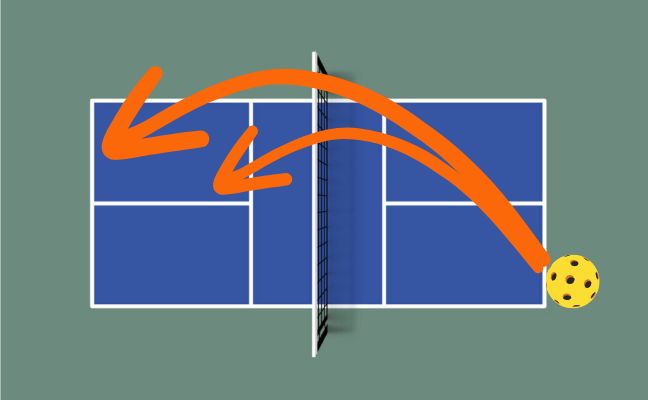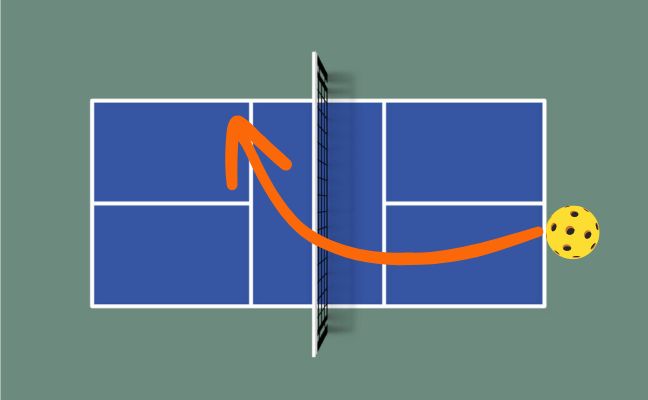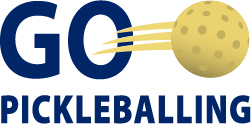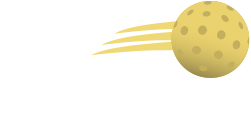Welcome pickleball players to this exciting post on mastering the art of the best pickleball serve! As you progress in your pickleball journey, developing a strong and diverse serving repertoire becomes crucial to gaining the upper hand in both singles and doubles matches. A well-executed serve can set the tone for the entire game, putting pressure on your opponents and setting you up for success. To complete all of these serves we recommend a pickleball paddle that can help you spin the ball at higher RPMs. In this guide, we will dive into the best pickleball serves that will take your serving skills to the next level. Get ready to add some spin, power, and finesse to your serves and become a force to be reckoned with on the court!
Need a refresher on Pickleball Serve Rules?
Table of Contents:
- The Hard Top Spin Serve: Adding Pace, Spin, and Depth
- The High Top Spin Serve: Loopy and Deceptive
- The Lob Serve: Slow and High for Tactical Advantage
- The Short Top Spin Corner Serve: Curling into the Corner
- The Side Spin Serve: Bending Towards the Backhand
- Additional Pickleball Serves
The Hard Top Spin Serve
Our first go-to serve is the Hard Top Spin Serve – a powerful and deep serve that can catch your opponents off guard. With a blend of topspin and pace, this serve is designed to force weaker returns and set you up for success in both singles and doubles. Below are the mechanics of the serve, providing tips on how to achieve maximum topspin and depth to make it challenging for your opponents to return the ball.
Pros:
- Generates high pace and spin, making it difficult for opponents to attack the serve.
- Forces opponents to retreat, creating opportunities to control the rally.
- Sets up strong follow-up shots due to weak returns.
Cons:
- Requires good timing and technique to execute consistently.
- High-paced serves might lead to occasional errors if not controlled properly.
Technique: To execute this serve, use a low-to-high motion with your paddle, creating topspin and pace on the ball. The goal is to hit the ball hard and deep toward your opponent’s baseline.
Purpose: The Hard Top Spin Serve is designed to put pressure on your opponents by forcing them to handle a fast-paced and spinning ball. It can result in weaker returns, making it difficult for them to attack your serves and set you up for strong follow-up shots.

The High Top Spin Serve
In the second segment, we will explore the High Top Spin Serve – a slower, loopy serve that aims to keep your opponents back at the baseline. The high bounce and topspin on this serve create a challenging return, forcing your opponents to generate their own pace, often leading to weaker shots. We will review the technique and key points to achieve a high, slow serve that will keep your opponents on their toes.
Pros:
- Slower and higher bounce puts pressure on opponents to generate their own pace on the return.
- Allows time to recover and get into a better court position after the serve.
- Disrupts opponent’s rhythm and timing.
Cons:
- May not be as effective against aggressive players who like to attack high balls.
- Requires a delicate touch to land the serve deep in the court.
Technique: The High Top Spin Serve involves a slower, loopy motion with your paddle to produce a high bounce and topspin on the ball. Aim to make the ball land deep in your opponent’s court, forcing them to generate their own pace on the return.
Purpose: The High Top Spin Serve is effective for keeping opponents deep in their court, preventing them from attacking your serve aggressively. It buys you time to get into a favorable position and control the pace of the game.

The Lob Serve
Next up is the Lob Serve, a strategic weapon to neutralize aggressive returners. We will discuss the benefits of a slow, high lob serve that allows you to control the pace of the game, making it difficult for your opponents to attack your serves. The blog post will guide you on perfecting the art of the lob serve, including tips on height, placement, and timing to maximize its effectiveness.
Pros:
- Slows down the pace of the game, giving you more time to recover and prepare for the next shot.
- Forces opponents to generate their own pace on the return, potentially resulting in weaker shots.
- Effective against aggressive opponents who like to attack the serve.
Cons:
- Risk of the ball going out or landing too short if not executed properly.
- Can be less effective on windy days, as the wind may affect the trajectory of the lob.
Technique: For the Lob Serve, use an underhand motion and a gentle lift to send the ball high above the net. The aim is to make the ball land deep in your opponent’s court, forcing them to hit the ball at waist level or higher.
Purpose: The Lob Serve is a strategic choice when facing aggressive returners or opponents with powerful groundstrokes. It disrupts their rhythm and forces them to generate their own pace, leading to potentially weaker returns.

The Short Top Spin Corner Serve
In the fourth section, we will delve into the Short Top Spin Corner Serve – a deceptive serve aimed at catching your opponents off balance. With a touch of topspin and angle, this serve is designed to curl into the corner, forcing your opponents to move off the court and making it challenging for them to return. We will break down the technique and tactics to execute this serve effectively.
Pros:
- Catches opponents off balance and out of position.
- Creates openings on the court for follow-up shots.
- Forces opponents to move quickly and hit difficult returns.
Cons:
- Higher risk of error due to the angled placement of the serve.
- Requires reasonable control to consistently hit the ball into the corner.
Technique: The Short Top Spin Corner Serve involves hitting the ball with topspin and a touch of angle to curl it into the corner of your opponent’s court, either on the forehand or backhand side.
Purpose: This serve is designed to catch your opponents off balance and out of position. By pulling them away from the center of the court, it creates openings for you to exploit with your next shot.

The Side Spin Serve
Lastly, on this list of best pickleball serves we will explore the Side Spin Serve, a crafty serve that bends towards the backhand side of your opponents. By using side spin, you can create a serve that pulls your opponents out of position and disrupts their rhythm. We will provide tips on achieving the right spin and placement to make this serve a powerful tool in your arsenal.
Pros:
- Pulls opponents off the court and forces them to hit on their weaker backhand side.
- Disrupts opponent’s rhythm and timing.
- Creates openings on the court for follow-up shots.
Cons:
- Requires practice to control the amount of side spin on the ball.
- May not be as effective against players with strong backhand returns.
Technique: The Side Spin Serve requires you to use a sidearm motion, putting side spin on the ball to make it bend towards your opponent’s backhand side.
Purpose: The Side Spin Serve is a tricky shot that pulls your opponents off the court and forces them to hit the ball on their weaker backhand side. It disrupts their rhythm and gives you a strategic advantage.

Additional Pickleball Serves to Master:
The Fast Flat Serve:
Technique: This serve involves hitting the ball with speed and precision, aiming to keep it low and flat over the net. It doesn’t have much spin, making it challenging for opponents to read the trajectory.
Purpose: The Fast Flat Serve is effective for catching opponents off guard with its speed and keeping them on the defensive. It can lead to weak returns and allow you to take control of the rally.
The Slice Serve:
Technique: The Slice Serve is similar to a tennis slice serve. It involves slicing the ball sideways, causing it to curve and bounce away from the opponent.
Purpose: The Slice Serve is a deceptive option that can confuse opponents, as they may expect topspin or no spin and be caught off balance by the curve. It is particularly effective when serving to the backhand side.
The Drop Serve:
Technique: The Drop Serve is a soft, finesse serve that barely clears the net and lands close to it. It requires touch and accuracy to execute effectively.
Purpose: The Drop Serve is used to catch opponents off guard, as they may be expecting a stronger serve. It can force opponents to move forward quickly and hit the ball on the rise, potentially leading to errors.
The Power Serve to the Body:
Technique: The Power Serve to the Body involves hitting a fast serve aimed directly at your opponent’s body, making it challenging for them to move out of the way or execute a clean return.
Purpose: This serve is designed to disrupt your opponent’s positioning and timing, leading to awkward returns or forcing them to hit a weak shot.
The Kick Serve:
Technique: The Kick Serve is similar to a topspin serve in tennis, where the ball bounces high and away from the opponent after hitting the court.
Purpose: The Kick Serve is a versatile serve that can be used to change the angle of the ball’s bounce and make it challenging for opponents to return. It can be particularly effective in doubles play, setting up your partner for a strong volley.
The Hybrid Serve:
Technique: The Hybrid Serve is a combination of different serve types, mixing elements of topspin, slice, and speed to create a unique and unpredictable serve.
Purpose: The Hybrid Serve keeps opponents guessing and prevents them from anticipating the ball’s trajectory, making it difficult for them to formulate a consistent return strategy.
Experiment with these different pickleball serves during practice sessions and games to find the ones that suit your playing style best. Remember, variety is key, so being able to mix up your serves will keep your opponents off balance and give you a competitive advantage. Have fun trying out these serves and becoming a more versatile pickleball player!
To conclude this comprehensive guide, we will emphasize the importance of a well-rounded serving game and how it can elevate your pickleball performance. With practice and dedication, you can master each of these five go-to serves and use them strategically to gain the upper hand in your matches. Remember, the best pickleball serve is not only a starting point but also a valuable weapon that can lead you to victory on the pickleball court. So, gear up, get ready to serve with a spin, and have a blast improving your pickleball game!
Shop Pickleabll PaddlesAfter mastering these serves make sure you check out our Favorite Pickleball Machine Drills!



